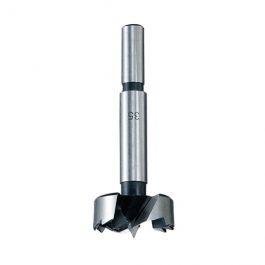- Joined
- 2 Dec 2004
- Messages
- 504
- Reaction score
- 4
- Country

Hi all,
I really want to make my own fitted wardrobes for my bedroom.
I have looked closely at the Ikea Pax system. Its good, very modular, very flexible. But its white melamine chipboard and I really did want something more premium.
I am looking closely at 18mm veneered mdf board for the carcasses. I would need to make the cuts using a tracksaw as demonstrated in Peter Millard's youtube videos. I am thinking of using a simple dowel jig to construct the cabinets with dowels and supplemented by glue and pocket screws angled in from the underside and topside which won't be seen. Shelves would be sitting on those small shelf support pins. I am keen on having a solid backpanel too so would be thinking of making that from 6mm mdf rebated into the rear of the carcasses. I think I could route a rebate like that with a small router although have never used one before.
Plan is for all the carcasses to sit on a plinth.
Famous last words - but I think that making carcasses out of sheet material would be within my capability if I get myself a tracksaw, small router, and the right dowel and pocket screw jigs?
My main problem I think will be doors.
Firstly, if Im making the carcasses out of a veneered mdf lets say walnut or sapele, should i make the doors out of the same? It will be dark inside and out. Or should I go for a painted finish on the doors out of standard mdf? I have seen Peter Millard's door making videos and I don't have a router table so I would need to make them using the glue on backpanel method.
Or should I buy the doors in, i.e from Ikea, and fit them to my own carcasses? This might be easier.
I can't afford to get custom made mdf doors.
Does anyone have any suggestions to help me finalise my plans please?
Oh also to add - the tracksaw I was intending to buy is the one reviewed by Peter Millard just last year - the screwfix MacAlister model. However its no longer available. Peter Millard also says the Aldi model or Lidl model are ok but neither of those are available either.
I really want to make my own fitted wardrobes for my bedroom.
I have looked closely at the Ikea Pax system. Its good, very modular, very flexible. But its white melamine chipboard and I really did want something more premium.
I am looking closely at 18mm veneered mdf board for the carcasses. I would need to make the cuts using a tracksaw as demonstrated in Peter Millard's youtube videos. I am thinking of using a simple dowel jig to construct the cabinets with dowels and supplemented by glue and pocket screws angled in from the underside and topside which won't be seen. Shelves would be sitting on those small shelf support pins. I am keen on having a solid backpanel too so would be thinking of making that from 6mm mdf rebated into the rear of the carcasses. I think I could route a rebate like that with a small router although have never used one before.
Plan is for all the carcasses to sit on a plinth.
Famous last words - but I think that making carcasses out of sheet material would be within my capability if I get myself a tracksaw, small router, and the right dowel and pocket screw jigs?
My main problem I think will be doors.
Firstly, if Im making the carcasses out of a veneered mdf lets say walnut or sapele, should i make the doors out of the same? It will be dark inside and out. Or should I go for a painted finish on the doors out of standard mdf? I have seen Peter Millard's door making videos and I don't have a router table so I would need to make them using the glue on backpanel method.
Or should I buy the doors in, i.e from Ikea, and fit them to my own carcasses? This might be easier.
I can't afford to get custom made mdf doors.
Does anyone have any suggestions to help me finalise my plans please?
Oh also to add - the tracksaw I was intending to buy is the one reviewed by Peter Millard just last year - the screwfix MacAlister model. However its no longer available. Peter Millard also says the Aldi model or Lidl model are ok but neither of those are available either.
Last edited:

